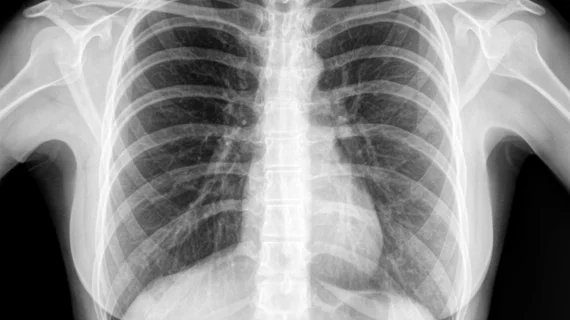Two Boston physicians this week urged their peers to help quash the “low value” practice of gathering daily chest x-rays in the intensive care unit without a specific clinical reason.
The pair, in pulmonary and critical care at two prominent hospitals, acknowledged that such imaging is well-intended, but noted that this practice is outdated and lends little benefit to the patient. In making their case, they highlighted the instance of an inpatient with pneumonia who received chest radiography in the ICU, which appeared to show a collapsed lung.
That indication snowballed treatment into ultrasound testing, computed tomography and (almost) the insertion of a chest tube. However, the procedure was aborted when CT demonstrated resolving pneumonia and no pneumothorax, as it was just a skin fold mimicking the condition.
“A clinician’s use of daily CXRs undoubtedly comes from a place of concern for patients,” Jason Maley, MD, and Jennifer Stevens, MD, with Beth Israel Deaconess and Massachusetts General Hospital, respectively, wrote Monday in JAMA Internal Medicine. “Thus efforts should respect stakeholder viewpoints and use literature to guide practice improvement. For the present patient, unnecessary testing resulted in a cascade of several additional imaging tests, as well as stress to the patient and family. More importantly, the patient nearly underwent a harmful, invasive procedure.”
In backing their claims, Maley and Stevens cited several studies, including a 2012 meta-analysis in Critical Care. In it, researchers found that using on-demand chest x-rays for specific clinical indications—rather than routine daily CXR—did not adversely impact outcomes. Plus, the American College of Radiology in 2011 deemed routine CXR in the ICU “usually not appropriate,” while Choosing Wisely has cited similar concerns more recently.
Advances in technology, such as ultrasound and modern ventilators that closely monitor pulmonary mechanics, have further rendered daily CXR moot. The writers suggested solutions such as ICU policy changes, evidence-based education and clinician engagement to begin addressing this issue. The practice can continue in certain specific scenarios, they added, including monitoring certain catheters, but largely this practice should disappear.
“CXRs should otherwise be reserved for specific clinical concerns, such as new hypoxemia,” Maley and Stevens said. “By eliminating the need to review daily CXRs for each patient, clinicians may also increase time spent at the bedside and focus on higher-value data that meaningfully inform care,” they added.
Check out the “Teachable Moment” piece in JAMA here, along with a corresponding commentary here. For further reading, a recent analysis in JACR also found that one hospital system could save $5 million by restricting chest x-ray use in the ICU.

